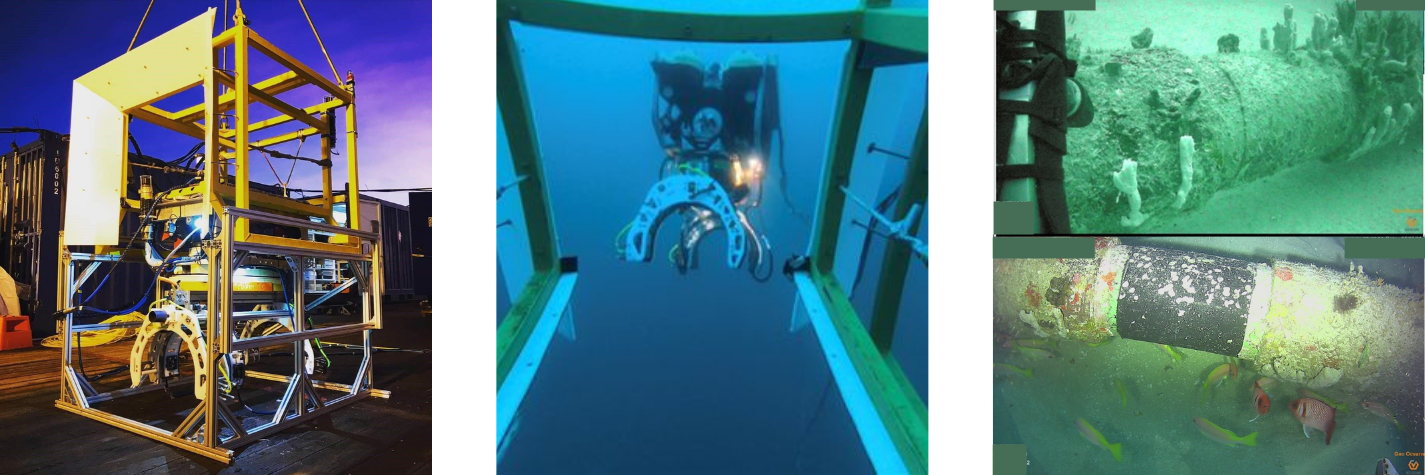Geo Oceans and Sonomatic were engaged by a client to provide wall thickness scanning capabilities for use in the field in July 2021. The aim of the project was to deploy tooling that would corrosion map the field joints at eight predetermined locations along the production flowline. By utilising a small ROV integrated tool deployed from a vessel of opportunity, the project could also be performed at a drastically reduced cost to the client.

The team designed and developed an entire inspection suite that would address a range of challenges often experienced with wall thickness mapping on non-piggable subsea pipelines, whilst also significantly reducing cost by utilising a small ROV deployed from a vessel of opportunity. The capability brought together a full vessel deployed ROV inspection suite with small ROV integrated tooling for circumferentially cleaning and scanning subsea flowlines using a range of advanced NDT techniques. The technology was designed and developed in collaboration between Geo Oceans and Sonomatic with the majority of work being completed in Western Australia, with some support from the UK.
Miniaturisation of the tooling to suit integration with small ROVs presented considerable design challenges resulting in significant modification to the ROV system, data transmission and launch and recovery systems. This tooling system incorporated the necessary attachment mechanisms required to secure the tool to the pipe’s weightcoat during scanning and provided through-tool cleaning for accurate marine growth removal. The need for reliable and safe deployment required the development of a bespoke launch and recovery system, unique to the small ROV and tooling.
The design philosophy for the entire tooling suite was based on the requirement to remain flexible and have the ability to rapidly mobilise and demobilise on short notice from vessels of opportunity or directly from assets. For Survey positioning and support, Geo Oceans engaged Blue Ocean Marine Services who provided and operated the positioning equipment infield.
The synergy of these systems and teams enabled the successful completion of not only the project but parallel development of unique, complex technical systems that can be used for a range of applications in the future, whilst significantly reducing the cost of scanning subsea pipelines.
By collaborating efficiently between teams, the successful development of a fully integrated wall thickness scanning package could be developed and provided to the client. Incorporating all teams under a single management structure enabled efficient project planning and delivery. Prior to this project, the only way to provide similar wall thickness scanning operations would require the deployment of a larger tool from a work class ROV system with accompanying dedicated DSV vessel at great cost. The application of this new disruptive capability has provided the client with significant cost savings of up to 70%.
Comment from the Author – Will Ross (Geo Ocean Graduate Engineer)
This project posed a lot of unique design challenges that required a collaborative effort from multiple subject matter teams. At every stage of the development phase the team pushed for innovative and unique approaches to the problem and the resulting system was able to effectively deliver results for the client. It’s also exciting to see the developments made during this project now being integrated into other existing systems to improve the reliability and efficiency of current systems and processes.









